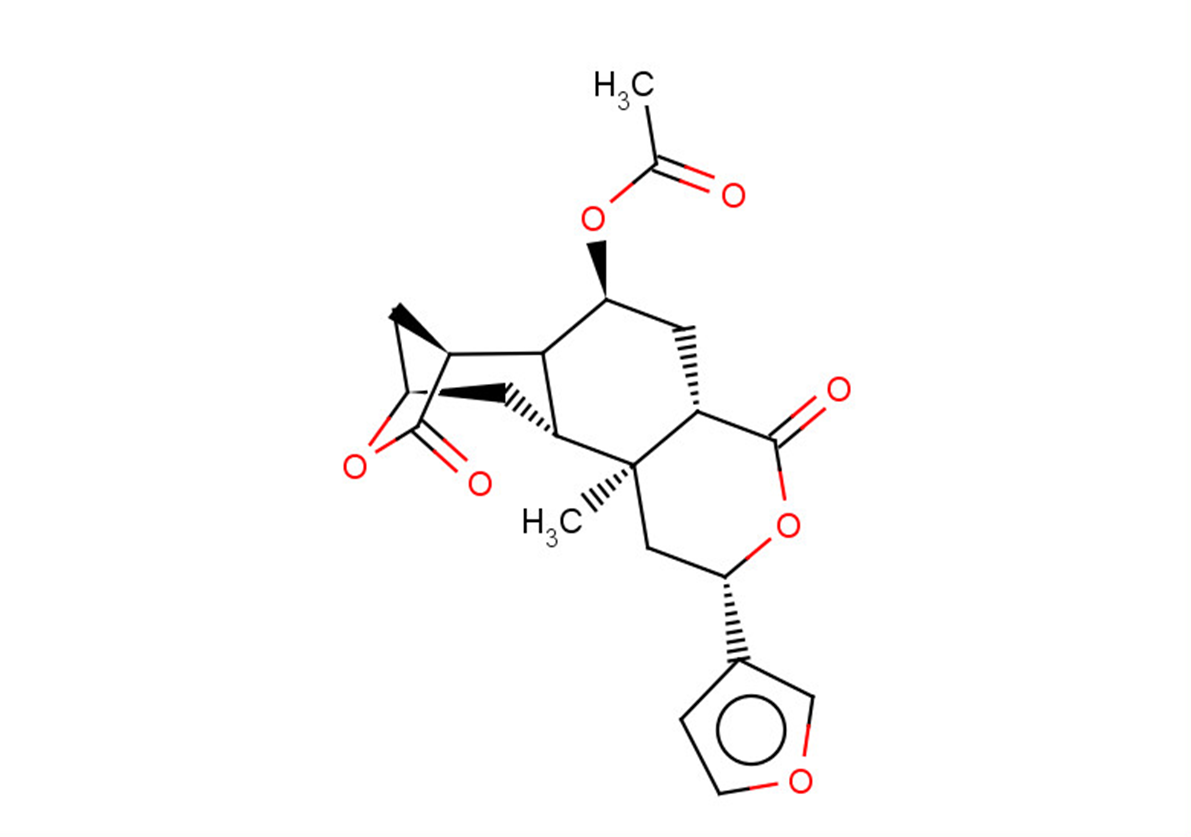
8-Epidiosbulbin E acetate
CAS No. 91095-48-6
8-Epidiosbulbin E acetate ( —— )
Catalog No. M24951 CAS No. 91095-48-6
8-Epidiosbulbin E acetate exhibits broad-spectrum plasmid-curing activity against multidrug-resistant (MDR) bacteria, including vancomycin-resistant enterococci.
Purity : >98% (HPLC)
 COA
COA
 Datasheet
Datasheet
 HNMR
HNMR
 HPLC
HPLC
 MSDS
MSDS
 Handing Instructions
Handing Instructions
| Size | Price / USD | Stock | Quantity |
| 5MG | 195 | In Stock |


|
| 10MG | 288 | In Stock |


|
| 25MG | 484 | In Stock |


|
| 50MG | 701 | In Stock |


|
| 100MG | 981 | In Stock |


|
| 200MG | Get Quote | In Stock |


|
| 500MG | Get Quote | In Stock |


|
| 1G | Get Quote | In Stock |


|
Biological Information
-
Product Name8-Epidiosbulbin E acetate
-
NoteResearch use only, not for human use.
-
Brief Description8-Epidiosbulbin E acetate exhibits broad-spectrum plasmid-curing activity against multidrug-resistant (MDR) bacteria, including vancomycin-resistant enterococci.
-
Description8-Epidiosbulbin E acetate exhibits broad-spectrum plasmid-curing activity against multidrug-resistant (MDR) bacteria, including vancomycin-resistant enterococci.
-
Synonyms——
-
PathwayMicrobiology/Virology
-
TargetAntifection
-
RecptorAnti-infection
-
Research Area——
-
Indication——
Chemical Information
-
CAS Number91095-48-6
-
Formula Weight388.4
-
Molecular FormulaC21H24O7
-
Purity>98% (HPLC)
-
Solubility——
-
SMILESC[C@](C[C@@H](c1cocc1)O1)([C@H](C[C@H](C[C@H]23)OC2=O)[C@@H]3[C@H](C2)OC(C)=O)[C@H]2C1=O
-
Chemical Name——
Shipping & Storage Information
-
Storage(-20℃)
-
ShippingWith Ice Pack
-
Stability≥ 2 years
Reference
1.A potential plasmid-curing agent, 8-epidiosbulbin E acetate, from Dioscorea bulbifera L. against multidrug-resistant bacteria.Int J Antimicrob Agents. 2008 Nov;32(5):405-10.
molnova catalog


related products
-
2-Hydroxy atorvastat...
2-Hydroxy atorvastatin calcium salt is a hydroxy metabolite of Atorvastatin calcium salt which is a potent HMG-CoA reductase inhibitor (IC50 = 8 nM).
-
HBC620
HBC620 shows brightly fluoresced in the Pepper bound state and can be visualize RNA dynamics in live cells.HBC620 is a HBC-like fluorophore.
-
Irilone
Irilone has immunomodulatory, and α-amylase inhibitory activities, it exhibits the selective inhibition toward CYP3 A4 rather than other major human CYPs.



 Cart
Cart
 sales@molnova.com
sales@molnova.com


